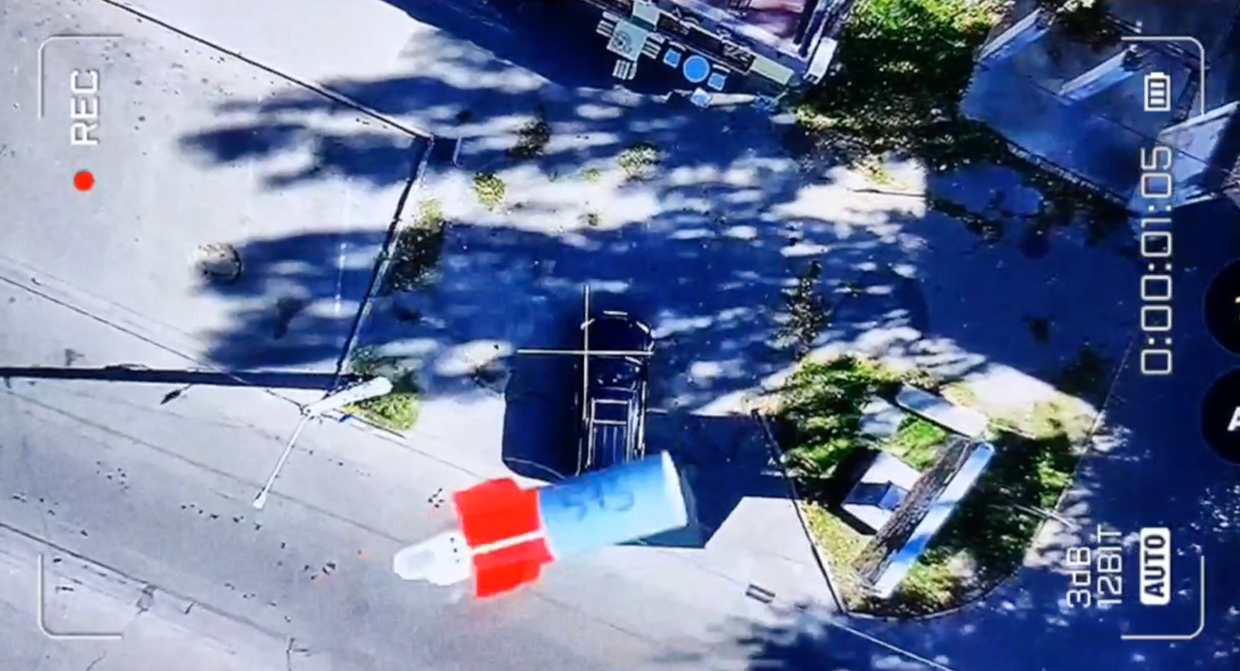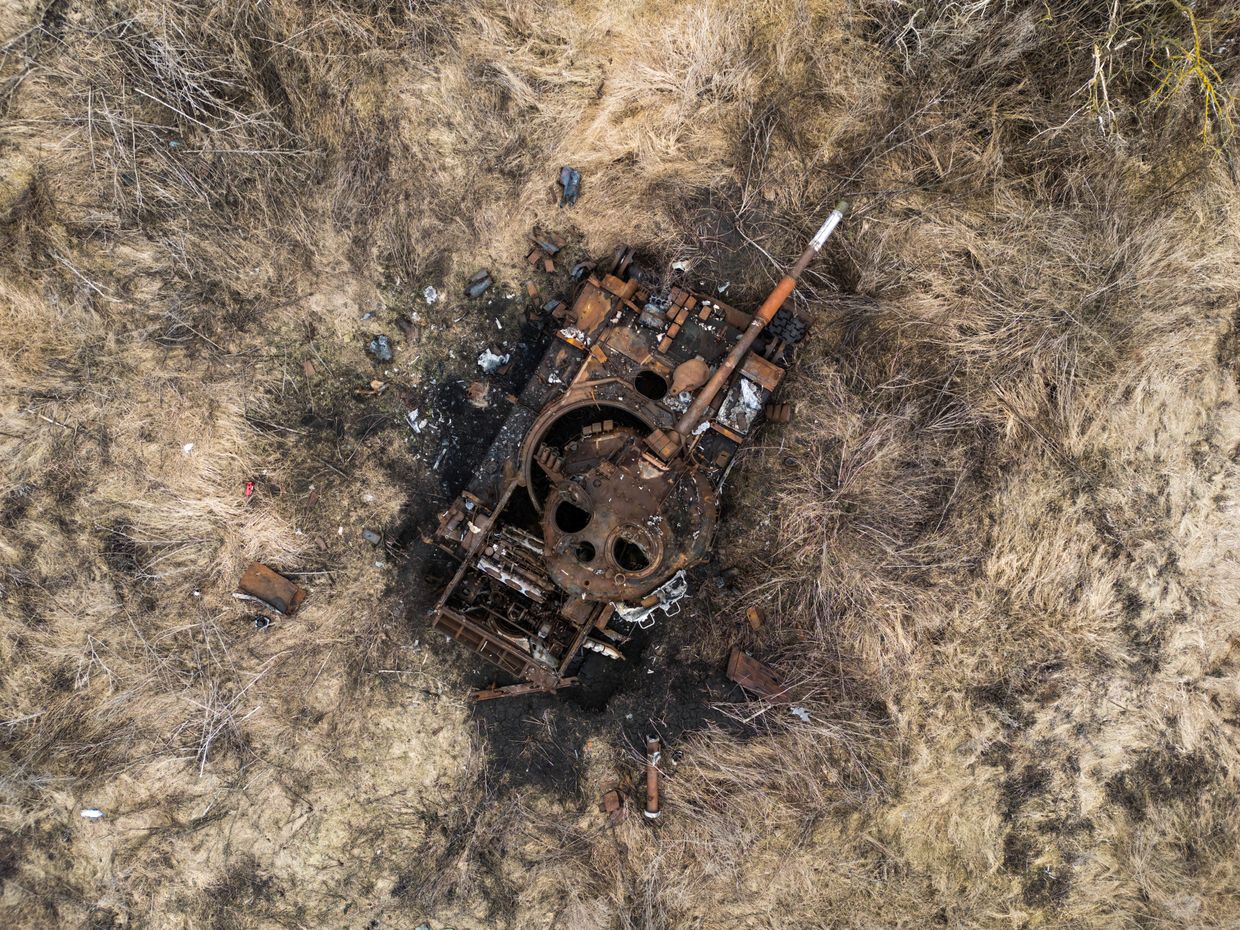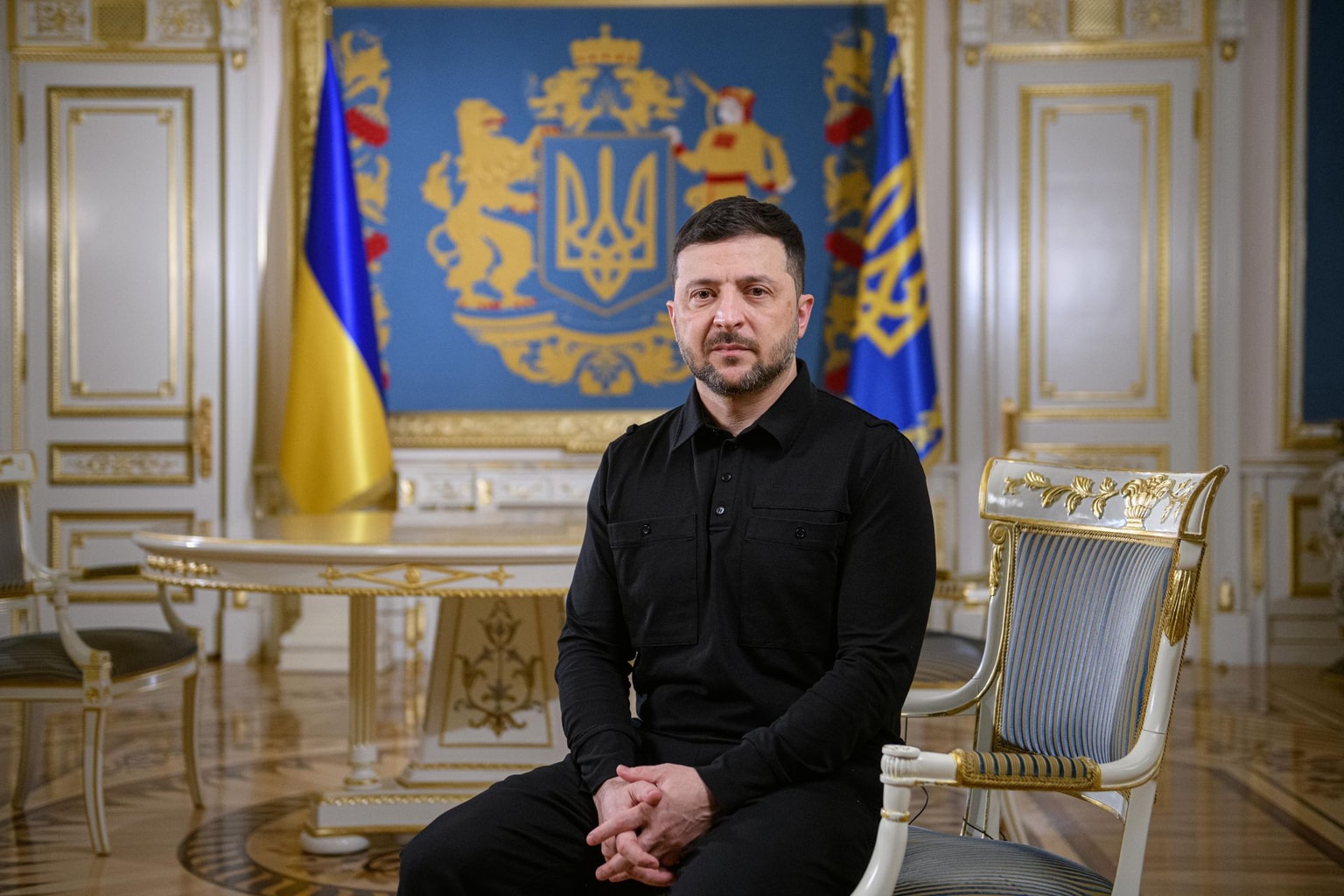
Russian drone attacks against Ukraine reach record levels but experts warn of worse to come
Ukrainian officials warn of worse to come as winter approaches with Russian air strikes targeting energy infrastructure aiming yet more nationwide blackouts.
A man walks past cars and a residential building damaged following a Russian drone attack in Kyiv on Sept. 26, 2024, amid the Russian invasion of Ukraine. (Photo by Roman Pilipey/AFP via Getty Images)
For the first time since the full-scale invasion, Russia launched drone attacks on cities and towns across Ukraine on a daily basis for an entire month.
According to Ukraine's Air Force, 1,339 Shahed-type kamikaze drones targeted the country in September, 1,107 of which were shot down, with some others being jammed by electronic warfare and flying into Russian or Belarusian airspace. Around 45 were unaccounted for with no further details given.
russia carried out a record number of Shahed drone attacks in September 2024. In total, russian terrorists launched 1,339 Shaheds over Ukraine, 1,107 of which were downed by 🇺🇦 air defenders.
— Defense of Ukraine (@DefenceU) October 1, 2024
In September, there was not a single day when the russians stopped their terror.… pic.twitter.com/zUOGKYFPZu
The trend has continued throughout the first days of October — 32 drones targeted Ukraine on Oct. 1, 105 on Oct. 2, 19 on Oct. 3, and air raid sirens and reports of drones across Ukraine have already been registered on Oct. 4.
Prime Minister Denys Shmyhal warned on Sept. 6 that Moscow was planning new mass aerial strikes targeting Ukraine's energy infrastructure.
Russia carried out a massive campaign of attacks over the spring, similar to the one launched during the fall and winter of 2022-23, causing a serious energy deficit and necessitating rolling blackouts across the country.
So far, damage and casualties caused by the September attacks have been relatively limited.
But experts who spoke to the Kyiv Independent warned against assuming Russia's drone attacks were simply ineffective, saying instead that they're part of a campaign to weaken and locate Ukraine's air defenses ahead of much larger attacks in the near future.
Russia's drone attacks [...] are a part of a campaign to weaken and locate Ukraine's air defenses ahead of much larger attacks in the near future
Russia's drone attacks were simply ineffective, saying instead that they're part of a campaign to weaken and locate Ukraine's air defenses ahead of much larger attacks in the near future
Kyiv is one of the cities that has been a target for Russian drones, and on Oct. 3, the Kyiv City Military Administration summarized the tactics used in the September attacks in a post on Telegram.
It highlighted that the attacks occur at night, employ drones of the Shahed type, and consist of groups of various sizes, flying at various heights and from various directions.
In a comment to the Kyiv Independent, the Kyiv City Military Administration said the capital has been "the number one target" for Russian forces since the start of the full-scale invasion.
"Mass attacks using a large arsenal of air weapons, including daily attacks by attack drones of the Shahed type, are a… criminal tactic of the enemy," it said.
"Contrary to all norms of international humanitarian law, the Russian army seeks to destroy the city, its infrastructure and residential buildings."
What is a Shahed?
The Shahed is an Iranian-designed, propeller-driven, one-way, kamikaze attack drone, measuring 3.5 meters in length, with a wingspan of 2.5 meters.
Its range, claimed by various sources, varies from 1,000 kilometers (about 620 miles) to 2,500 kilometers (about 1,550 miles), and has a maximum flight speed of about 185 kilometers (115 miles) per hour.
It weighs a total of around 200 kilograms, and carries a high explosive fragmentation warhead estimated to weigh 30–50 kilograms.
They've been deployed in Russian attacks against Ukraine since October 2022. In Ukraine, they are nicknamed "mopeds" due to the sound of their engines, often audible as they fly overhead during attacks.

Iran recently unveiled a new version, the Shahed-136B with a range of 4,000 kilometers (2,500 miles), according to Tehran.
Crucially, they're also very cheap to produce — Western media, such as the New York Times, has reported the cost of each Shahed-136 drone to be as low as $20,000, but Russia may be paying a bit more for them.
A February leak by a group of hackers from Prana Network revealed Russia and Iran reached an agreement for each Shahed-136 drone to cost Russia $193,000 if ordered in a 6,000 batch or $290,000 in a 2,000 batch.
But compared to the cost of cruise and ballistic missiles which can range from $3-15 million each, they're still cheap. Additionally, in an August 2023 report, U.K. Defense Ministry said Russia had begun domestic production of its own Shahed-type drones.
"Drones are less expensive than sophisticated missiles, and they have a range that is useful from the Russian perspective, as they can launch them from relative safety, so they're fairly long-range," Iain Boyd, director of the Center for National Security Initiatives at the University of Colorado, told the Kyiv Independent.
"I think another aspect is their availability — they're easier to manufacture and produce than sophisticated weapons, so it's not just the cost, it's how quickly these things can be acquired," he added.
Russian drone strike tactics
Launching mass waves on a daily basis, even if they're all intercepted, can have two benefits for Russia, according to Sidharth Kaushal, a senior research fellow at the Royal United Service Institute (RUSI).
"I suspect one of the reasons might be a desire to run down stockpiles of (Ukraine’s) interceptors ahead of the use of more scarce cruise and ballistic missiles," he told the Kyiv Independent.
Ukraine has received numerous modern air defense systems from Western allies which have helped protect cities from missile and drone attacks.
But the interceptor missiles these systems use are not cheap. One IRIS-T interceptor costs around $450,000, significantly more than the cost of a Shahed drone.

"Ukraine has gotten progressively better at intercepting one-way attack unmanned aerial vehicles (UAVs) with capabilities other than air defense missiles," Kaushal said. "That helps conserve interceptor missiles for when the challenge is not drones but cruise and ballistic missiles."
In terms of the recent uptick in drone attacks, Ukraine will have had to expend correspondingly more air defense resources to deal with them, potentially forcing them to make what Boyd calls "difficult decisions."
"Do we keep our precious interceptors for a larger-scale missile attack, or use them to shoot down drones?" he said. The second benefit to Russian forces is that intercepting drones means exposing Ukraine's air defense network.
"Do we keep our precious interceptors for a larger-scale missile attack, or use them to shoot down drones?"
"UAVs can be used as pathfinders, a tool to force (an air defense) radar to light up allowing the Russians to map the layout of defenses around Kyiv and other fairly well-defended cities," Kaushal said.
According to Kaushal, all of this confirms Shmyhal's warning that Ukrainian cities including Kyiv should expect mass missile and drone attacks in the near future, possibly at a level previously not seen.
"I think they'll ramp it up to the extent they can," Kaushal said, though he noted there are limiting factors to the number of missiles Russia can launch in any one attack, such as the number of launch platforms available.
"Also things like target selection and development, and route planning for the preparation of missile strikes are all time-consuming and human capital-consuming," he said.
"But even so, I'd expect a relative increase," he added.












